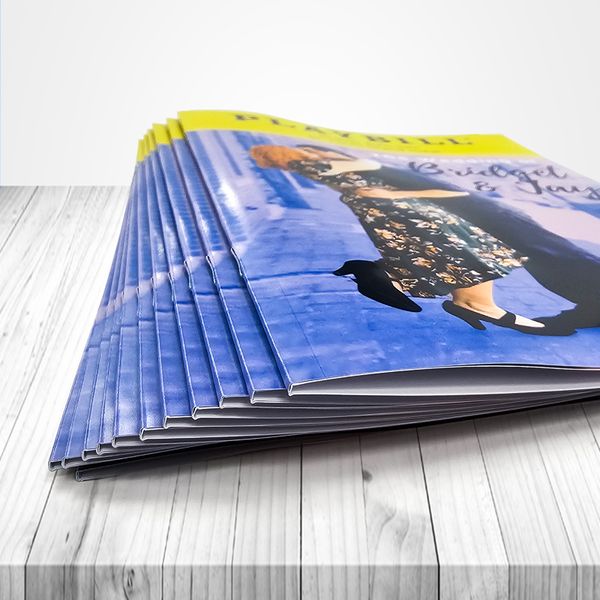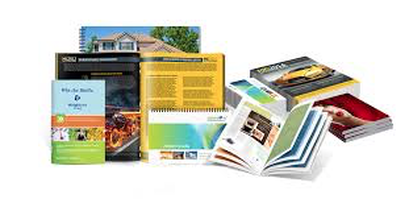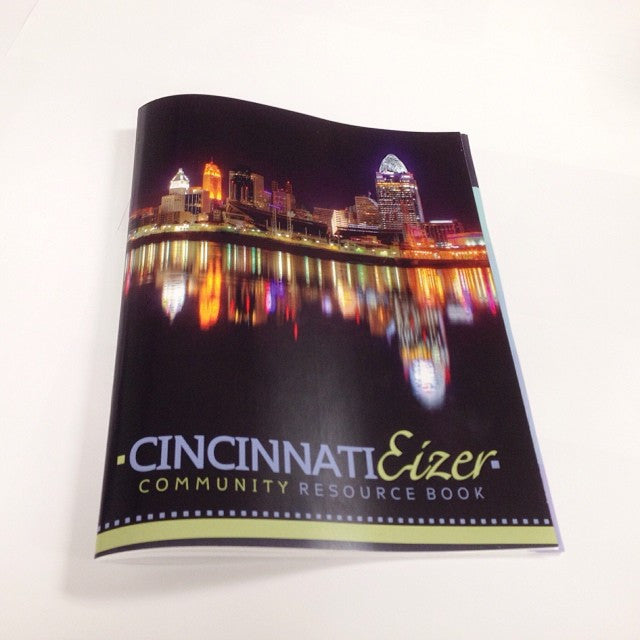How Booklet Printing Supports Omni-Channel Marketing Strategies
How Booklet Printing Supports Omni-Channel Marketing Strategies
Blog Article
The Necessary Overview to Comprehending Booklet Printing Options and Techniques
The procedure of pamphlet printing entails numerous considerations that can substantially influence the end product. From selecting the appropriate format and dimension to comprehending the nuances of binding methods, each selection plays a vital function. Furthermore, factors such as paper stock and printing methods additional influence the efficiency of the brochure. As one navigates these options, it comes to be necessary to comprehend how they interconnect and what that implies for the total result.
Comprehending Brochure Sizes and layouts
When taking into consideration pamphlet printing, understanding the different styles and sizes available is vital for accomplishing the desired presentation. Pamphlets can be created in numerous styles, including saddle-stitched, spiral-bound, and perfect-bound, each offering distinct advantages. Typical sizes range from basic letter (8.5 x 11 inches) to smaller sized options like A5 (5.8 x 8.3 inches), permitting adaptability based upon material and target audience.Selecting the proper size can influence both the layout and visitor involvement. Bigger dimensions could match visually driven content, while smaller layouts may be much more easy to use and mobile. In addition, the number of web pages affects the option of binding technique, as thicker booklets may call for stronger bindings. Eventually, recognizing these facets allows for an extra tailored approach, making sure that the last product aligns with the desired message and visual, improving the overall performance of the communication.
Picking the Right Paper Stock

Binding Methods: Factors To Consider and options
When it involves binding methods for booklets, a number of alternatives are readily available, each with unique benefits. Saddle stitch binding provides an economical option for thinner booklets, while best binding methods provide an even more sleek look for thicker magazines. Wire-O binding stands apart for its longevity and ease of usage, making it suitable for files that require adaptability.
Saddle Stitch Binding
Saddle stitch binding provides a sensible and cost-efficient solution for constructing brochures, making it a popular choice among companies and publishers. This binding method entails folding sheets of paper in fifty percent and stapling them along the fold line, creating a orderly and neat look. Usually suitable for pamphlets with a reduced page matter, saddle sewing is optimal for publications, pamphlets, and educational materials. The simpleness of this technique permits for quick manufacturing and is usually preferred for brief runs or marketing products. Nonetheless, it is important to note that saddle stitch binding may not appropriate for thicker pamphlets, as the spine might not stand up under increased weight. Generally, it stays a reputable choice for many printing projects.
Perfect Binding Techniques
Perfect binding is a commonly used strategy that gives a sleek and expert coating to pamphlets and magazines. This technique involves gluing the pages together at the spine making use of a solid adhesive, permitting a tidy edge and the capacity to hold a bigger number of web pages contrasted to saddle stitching. Perfect binding is especially appropriate for thicker booklets, such as brochures and annual reports, where a strong, flat spinal column is wanted. In addition, it offers the alternative for a published cover that can be created to enhance aesthetic allure. Factors to consider such as page matter, paper weight, and the intended usage of the booklet ought to be taken right into account, as they can influence durability and total high quality.
Wire-O Binding Choices
Wire-O binding, understood for its durability and flexibility, provides an outstanding choice for booklets that need very easy page turning and a professional look. This binding method employs a series of metal loops that hold pages safely, permitting them to exist level when open. It is specifically suitable for presentations, guidebooks, and directories due to its durable nature. Wire-O binding is available in different shades and sizes, fitting various page counts and thicknesses. Additionally, it permits the addition of tabs and covers, boosting the booklet's overall aesthetic. Considerations for Wire-O binding include the choice of cable shade, the dimension of the loops, and the degree of customization desired, all of which can greatly influence the final product's look and performance.
Digital vs. Offset Printing: Which Is Best for You?
When selecting a printing technique for booklets, comprehending the distinctions between electronic and balance out printing is important. Digital printing utilizes contemporary innovation to generate premium prints rapidly and affordably, making it suitable for brief runs or tasks calling for quick turn-around times. It allows for personalization, giving the capacity to publish on-demand with marginal waste.In contrast, balance out printing is a standard technique that masters producing big amounts with regular quality. It entails moving ink from a plate to a rubber blanket, after that to the paper, which leads to vibrant shades and precise details. Offset printing normally requires longer setup times and is extra affordable for larger volumes.Ultimately, the selection between electronic and balance out printing depends on job needs, budget, and preferred quantity. For tiny, time-sensitive jobs, digital could be the ideal choice, while countered may be more effective for bigger, high-grade productions.

Designing Your Brochure: Tips and Best Practices
When making a pamphlet, careful focus to format, font choice, and shade usage can view publisher site substantially boost its efficiency. A well-structured design overviews the reader's eye, while proper fonts ensure readability and communicate the wanted tone. Additionally, effective use shade can evoke emotions and highlight crucial info, making the general layout much more impactful.
Picking the Right Format
Just how can one successfully select the best design for a booklet? First, it is important to examine the brochure's objective and target audience. A clean, arranged format improves readability and engagement. Using a grid system can help in aligning elements regularly, developing an expert appearance. Additionally, incorporating visual pecking order with varying dimensions and placements of pictures and message can lead the visitor's eye and stress crucial details. It is also essential to leave adequate white area, which protects against congestion and enables much better emphasis. Testing different formats through mock-ups can provide insight right into exactly how the layout carries out in real-world scenarios, guaranteeing that the last item fulfills both visual and functional demands. Practical Selecting Suitable Font Styles
An appropriate font style can substantially improve the total design of a pamphlet, matching the format and reinforcing the material's message. The option of font styles need to take into consideration her response readability, particularly for body message, as it assures the details comes to all viewers. Sans-serif font styles are commonly preferred for electronic formats, while serif typefaces can provide a standard feeling in printed products. It's a good idea to restrict font selections to 2 or 3 to preserve aesthetic comprehensibility. Furthermore, font style dimension plays a vital duty; headings ought to be distinctive yet not overwhelming, while body message ought to fit for reading. When picking fonts, placement with the brochure's theme and target audience is essential for efficient interaction and aesthetic appeal.
Efficient Use Color
Shade works as a powerful device in booklet layout, forming understandings and assisting visitor emotions. It can evoke sensations of exhilaration, trust fund, or peace, depending on the shades picked. Developers should take into consideration color concept concepts, making certain that the picked palette aligns with the booklet's message and target market. Making use of cozy shades like red and orange can create seriousness, while cooler tones like blue and environment-friendly foster tranquility.Additionally, comparison plays a crucial role; corresponding shades can improve readability and visual appeal. Uniformity in shade use across pages even more reinforces brand identification and cohesion. Inevitably, efficient shade execution not only captures interest yet likewise strengthens the booklet's objective, making it a crucial aspect of successful design.
Finishing Touches: Coatings and Special Results
While many think about the content and format of a brochure one of the most crucial elements, the completing touches, such as layers and unique results, play a crucial duty in improving its overall charm. Coatings can supply security and resilience, ensuring that the pamphlet holds up against deterioration. Matte coatings offer an innovative, non-reflective surface area, while shiny coatings can make colors appear even more captivating and vibrant. Special effects, like embossing or foil marking, include a responsive dimension that can create a memorable impact. These methods can highlight particular locations, accentuating crucial info or creating aesthetic passion. Furthermore, UV finishing can offer a high-shine surface that boosts the total look.Together, these completing touches not only enhance the pamphlet's visual yet likewise interact professionalism and trust and focus to detail, inevitably leaving a lasting influence on the visitor.
Expense Considerations for Booklet Printing
Recognizing the different cost factors to consider for booklet printing is necessary for organizations and businesses aiming to maximize their budget plans. Trick variables affecting prices consist of the choice of binding, ink, and paper approaches. Greater top quality materials, such as exceptional paper or specialized inks, typically boost the general expenditure. Furthermore, the dimension and web page matter of the booklet play a considerable duty; bigger booklets call for more sources and time to produce.Another crucial factor to consider is the printing strategy, whether digital or offset, as each has its own rates structure and viability for different amounts. Businesses should likewise factor in style costs, which can differ based upon intricacy and making use of specialist solutions. Ultimately, shipping and handling charges can contribute to the total, particularly for huge orders. By reviewing these elements, organizations can make informed choices that align with their monetary capabilities while achieving the wanted high quality in their published products.
Regularly Asked Questions
What Are the Ecological Effects of Pamphlet Printing?
The ecological effects of pamphlet printing consist of deforestation from paper manufacturing, carbon discharges from transport, and waste generation from disposed of products - Booklet Printing. Lasting practices, such as making use of recycled paper and eco-friendly inks, can mitigate these results
Exactly How Can I Make Certain Shade Accuracy in My Brochure?
To ensure shade accuracy in a brochure, one need to make use of calibrated displays, employ professional color profiles, carry out examination prints, and choose high-quality printing services that use color matching and proofing alternatives for best results.
What Is the Common Turnaround Time for Booklet Printing?
The common turn-around time for brochure printing differs depending on the intricacy and quantity - Booklet Printing. Generally, it ranges from a couple of days Learn More to 2 weeks, affected by variables such as publishing approaches and ending up needs
Exist Minimum Order Quantities for Pamphlet Printing?

Can I Print Pamphlets in Numerous Languages?
Publishing booklets in multiple languages is possible. Lots of printing services offer options for bilingual or multilingual formats, permitting reliable communication. Cautious preparation warranties that make components suit various languages without jeopardizing readability or visual appeals. Additionally, aspects such as paper supply and printing techniques more affect the effectiveness of the brochure. When taking into consideration booklet printing, recognizing the different styles and dimensions offered is necessary for attaining the desired discussion. When picking a printing technique for pamphlets, recognizing the differences in between electronic and offset printing is important. In addition, the size and page matter of the pamphlet play a considerable function; larger booklets need more resources and time to produce.Another vital consideration is the printing method, whether digital or countered, as each has its own rates framework and viability for various amounts. The ecological impacts of pamphlet printing consist of logging from paper manufacturing, carbon exhausts from transportation, and waste generation from thrown out products.
Report this page